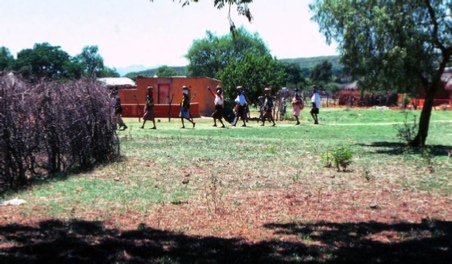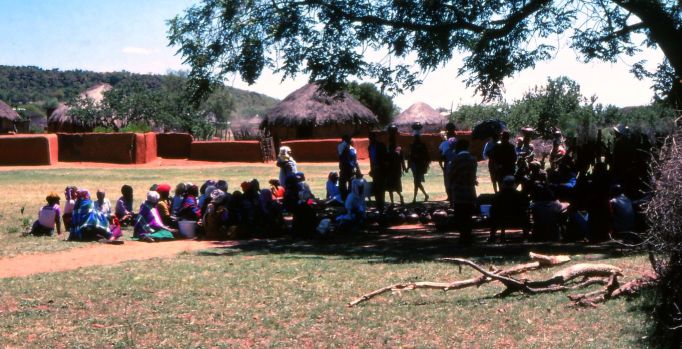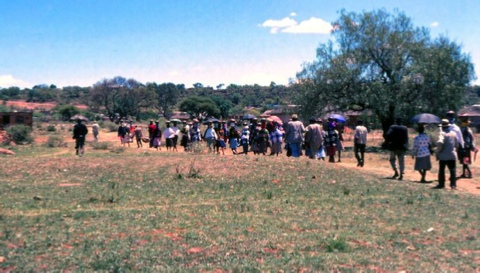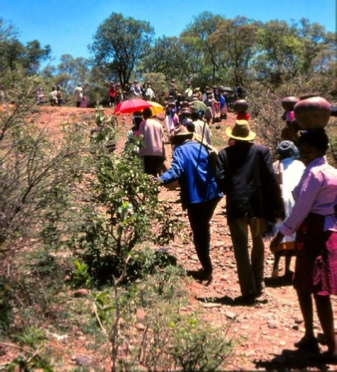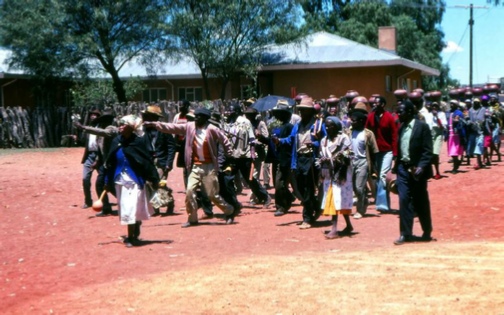© 2023 Dr Margaret Sheppard
Stage 2
Approximately two weeks after the first stage of Dikgafela, the same process is repeated. One of the Chief’s officials calls out from the top of the hill for the beer to be brought -
The different sub Kgotlas arriving at the local Kgotla with their clay pots of beer.
When all the sub kgotlas are collected at the local kgotla, the Headman announces the arrangements and answers questions. There is often also a prayer for rain. Then they all set off in single file for the chief’s kgotla -
The progress from the local kgotla through the village, climbing the steep hill, to the Chief’s Kgotla. As they go they sing the traditional Dikgafela songs e.g. “ Mogoga o lere, thokolo ya metsi a pula” and “pulawe, pula pulawe”. On the steep inclines carrying their loads, these tend to fade!
As they arrive they are singing the Dikgafela songs at full blast! And the men unencumbered by the beer pots dance. Bystanders are playfully beaten with the moologa branches whilst “Pula! Pula”(Rain! Rain!) is shouted at them.
There is an additional Dikgafela song they sing:
“Kgosi Seepapitso o ka re pulawe
Kgosi Bathoen pulawe a ye tshopotsho.
This means Chief Seepapitso can Pulawe and call the rain (i.e. because he is the Chief he is the rainmaker), The chief’s father, Bathoen can also call the rain and heavy showers will come. The idea is that if ordinary people did this the ancestors would not listen as only the chiefs are the rainmakers.
The women carry the small pots of beer, the men carry their kgotla chairs and a big clay pot from their local kgotla to drink their beer from. The women tip their pots into this and 4-
Arriving at the Chief’s Kgotla

